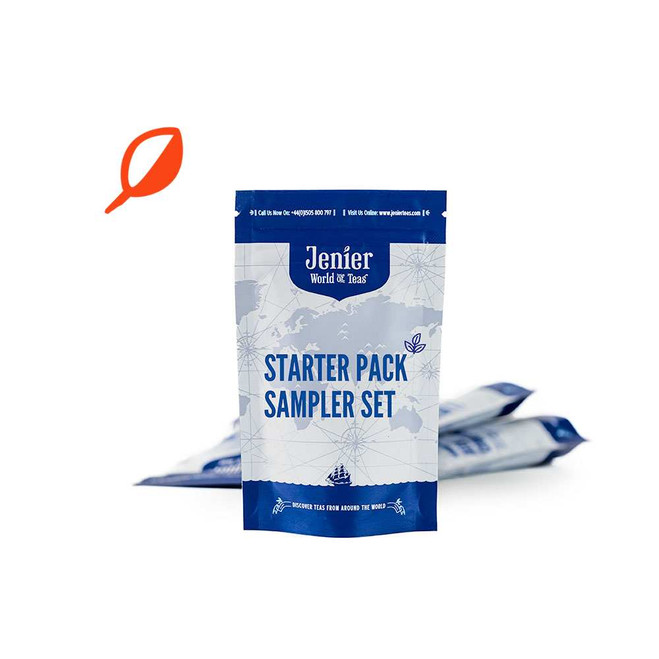-

-

Simply Gin Green Tea - Loose
£33.39 -

-

-

-

-

-

-

-

-

Summer Blossom Flowering Tea
£107.92 -

Quick Guide To Loose Leaf Tea.
A Quick Guide To Loose Leaf Tea.
Whatever the kind, white tea, green tea, yellow tea, oolong tea or black tea, all tea comes from the same plant, Camellia Sinensis. How the plucked leaves are processed changes their character, chemical composition and appearance.
White Tea, The Youngest Leaves.
White Tea is the name given to the new growth buds, and young leaves plucked before they open fully. Each new bud on a tea bush has tiny white hairs that give the leaf a soft, dried-white appearance. These hairs are called 'bai hao' or 'pekoe' and are part of the tea plant's natural defence mechanism. White Tea is these buds, sometimes buds plus one or two leaves that the tea pickers pluck. The plucker takes great care not to bruise the leaves or buds. Once picked, the pluckers carefully lay out the buds and leaves to wither naturally in the sun. Once this process is complete, the tea makers move the leaves indoors to continue the withering process. The leaves are exposed to final drying so that all but around 2 - 3% of water remains in the leaf. It's essential to remove any excess water.
Green Tea.
Green Tea has been enjoyed for thousands of years and involves plucking the leaves once they have fully opened. As a result,
green tea retains high levels of antioxidants (polyphenols, often referred to as ECGC or catechins) and it is the abundance of these antioxidants provides green tea with many health benefits reported in leading health journals.
Pouchong Tea.
Pouchong is a lightly oxidised tea between oolong and green tea. It has a more mellow taste than oolong tea yet is stronger than green tea. Pouchong tea has a unique flavour and is only slightly oxidised, between 8 and 10 %.
Oolong Tea.
Oolong Teas are semi-oxidised, meaning the tea leaves are left to wither partially and then rolled or crushed, so the leaf membrane breaks. A physical change is visible as the tea leaves begin to curl, and their edges turn coppery. However, the tea maker will decide when to stop the process before the tea leaf is completely oxidised. The colour and taste of oolongs vary but, in simplest terms, are known as light or dark oolongs.
Black Tea.
Black Tea is probably the most well-known in Western culture in its various forms. Black tea is different from green tea, oolong or white tea because the plucked leaves are fully oxidised. There are many variations of methods and processes used by tea producing regions throughout the world, hence the tremendous variety of colour and flavour.
Rooibos.
Rooibos grows on the slopes of the Cederberg Mountains in the North Western Cape of South Africa are renowned for their deep aroma and full-bodied taste. Often known as Red Tea or Red Bush Tea, Rooibos is totally caffeine free and is usually classified as a herbal 'tea' although it does not contain tea leaves from the Camellia Sinensis plant.
Fruit & Herbal Teas.
Fruit and Herbal teas are technically not teas at all. They are, in fact, 'tisanes' or 'infusions' like Rooibos; they are not from the Camellia Sinensis plant and, as such, are not an authentic 'tea'. Caffeine-free, herbal and fruit infusions offer tremendous flavours and have been enjoyed for thousands of years, not just for their taste but also for their many health benefits.
Loose Leaf tea is but one part of the equation to achieve great tasting tea. Learn more about the importance of water in our post at the Tea Hub: What is the Best Water For Tea?
If you're new to loose leaf teas, you might be wondering how do you make the perfect brew? Visit our training post How To Make Loose Leaf Tea - Top Tips For The Perfect Brew to find out more.
You might also be interested in exactly what is 'tea' and how it is manufactured? To help with these questions, we've written a brief article you'll find at the following link: How Is Tea Made? A Brief Guide
